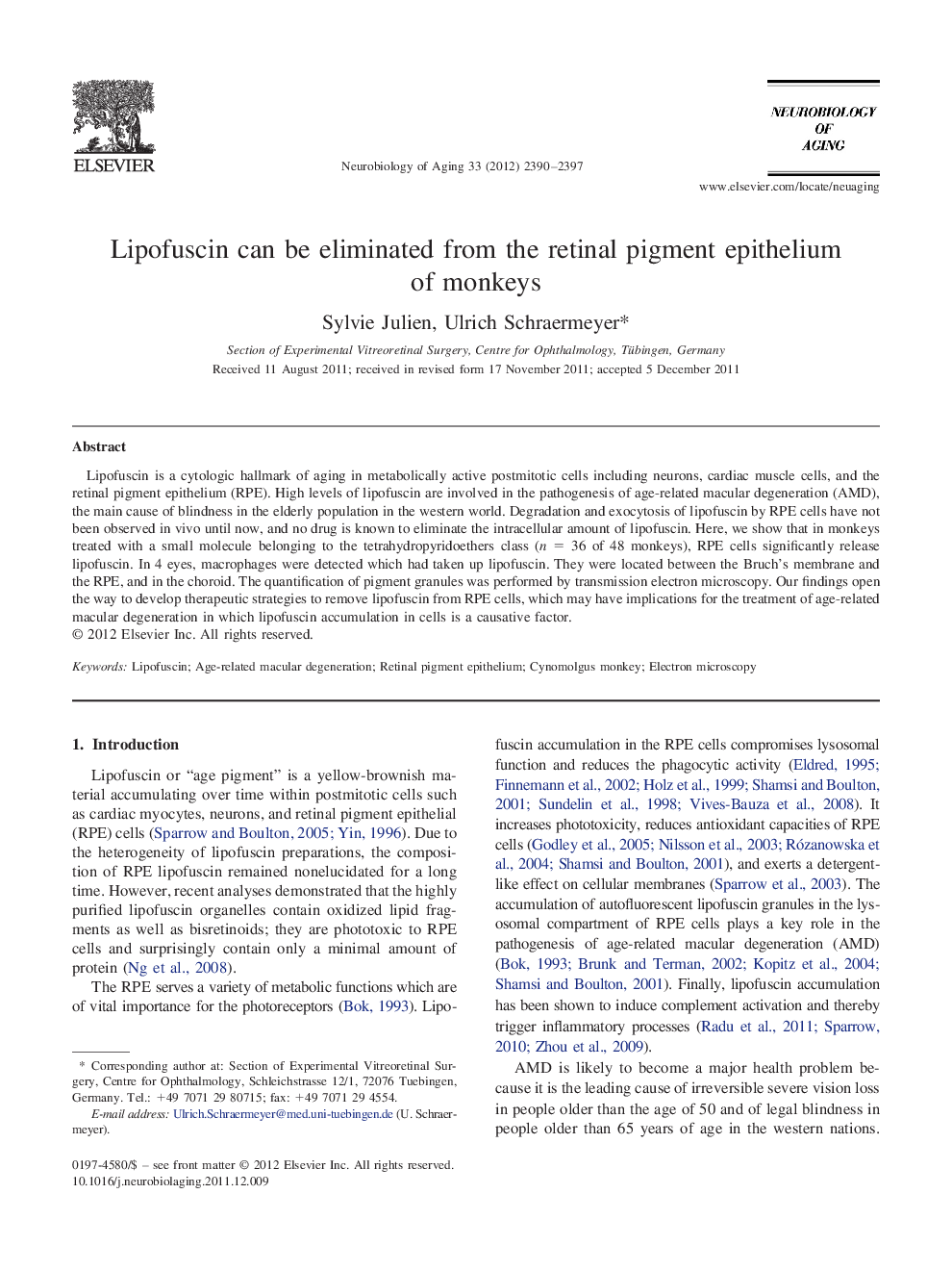| Article ID | Journal | Published Year | Pages | File Type |
|---|---|---|---|---|
| 6808175 | Neurobiology of Aging | 2012 | 8 Pages |
Abstract
Lipofuscin is a cytologic hallmark of aging in metabolically active postmitotic cells including neurons, cardiac muscle cells, and the retinal pigment epithelium (RPE). High levels of lipofuscin are involved in the pathogenesis of age-related macular degeneration (AMD), the main cause of blindness in the elderly population in the western world. Degradation and exocytosis of lipofuscin by RPE cells have not been observed in vivo until now, and no drug is known to eliminate the intracellular amount of lipofuscin. Here, we show that in monkeys treated with a small molecule belonging to the tetrahydropyridoethers class (n = 36 of 48 monkeys), RPE cells significantly release lipofuscin. In 4 eyes, macrophages were detected which had taken up lipofuscin. They were located between the Bruch's membrane and the RPE, and in the choroid. The quantification of pigment granules was performed by transmission electron microscopy. Our findings open the way to develop therapeutic strategies to remove lipofuscin from RPE cells, which may have implications for the treatment of age-related macular degeneration in which lipofuscin accumulation in cells is a causative factor.
Keywords
Related Topics
Life Sciences
Biochemistry, Genetics and Molecular Biology
Ageing
Authors
Sylvie Julien, Ulrich Schraermeyer,
